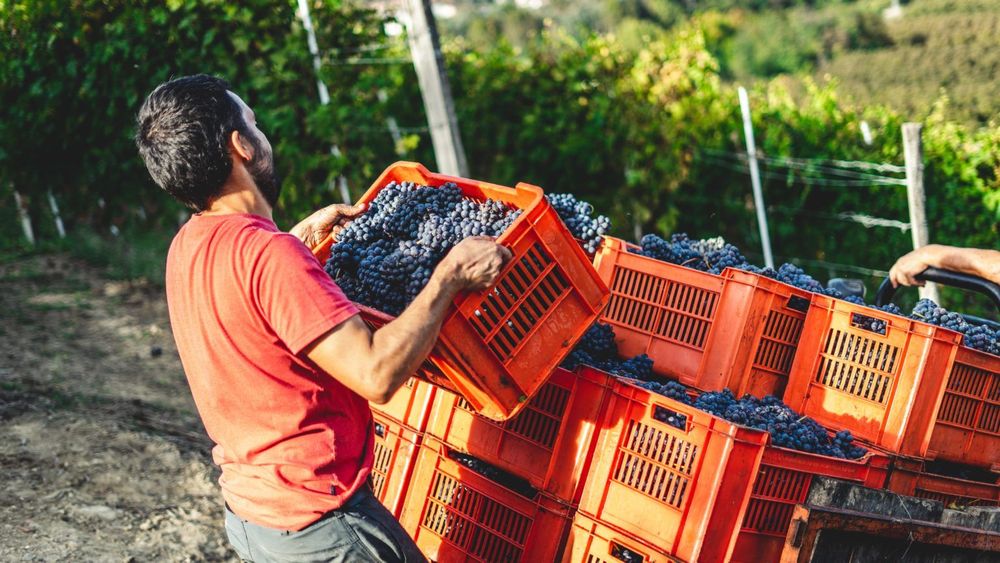
How to Find Top Talent For Your Winery
People have been making wine for centuries, this is not a new fact. Archaeologists have found proof of winemaking as far back as 6000 BC, in modern-day Georgia. These ancestors discovered that burying grape juice underground during the winter would turn it into wine. They would even store some batches underground for up to 50 years.
We have come a long way since then. Modern techniques, growing market interest, climate change are just a few of the factors that have shaped the modern wine landscape. Each growing season will come with its challenges like late frost, scorching sun, or drought. But how wineries’ overcome these difficulties become encapsulated in each bottle they produce from that vintage year.
It’s by working through obstacles that have given winemakers the knowledge to produce exceptional wine, regardless of the growing conditions of the season.
However, the only way a winery can achieve such successful results is thanks to the talented winemaker and dedicated hands supporting the process. The number of wineries actively producing wine in the United States has steadily risen over the past 10 years despite a massive global shutdown. This means the market is becoming even more competitive. The best competitive advantage a winery can have is its talent. These are the people who are going to tend to your vines, harvest your grapes, make your wine, and sell your product.
But a more competitive winery landscape also means more difficulties with wine industry recruitment. Wineries now need to look at their culture, growth potential, and compensation packages to entice top talent. Even more needs to be done to retain these professionals.
Here are some tips on how to draw wine talent to your winery and how to keep them for the long term.
Developing a Strategic Objective for Your Winery
In short, people want to work for a company they can get behind. But this is difficult for them to do when you don’t fully understand what your overall winery goals are.
This starts with your brand vision. A clearly defined vision you hold yourself and your employees to. The second is quantifiable key performance indicators (KPIs). These can include market penetration growth rates, production yield, employee retention. It’s a list that is unique to your winery, your brand, and your vision.
This provides a framework that potential wine talent can understand to see if your company goals align with their own professional ones.
Cultivating Company Culture
It’s well known that we spend one-third of our lives at work. So it’s important to love what you do. But it’s even more important to love the environment you are in.
A toxic work environment where employees feel overworked, underappreciated, or dispensable will inevitably lead to poor performance and turnover. But wineries can work to develop a positive work environment and company culture. One set around genuine interest in the well-being of your staff and having appropriate work/life balance.
Balance is a hot button issue in the modern wine world. Wineries do demand hard work and at times long hours. However, it’s a give-and-take scenario. Staff is much more willing to put in the hard work and long hours when they know a winery can give them the downtime they need to recoup and live their lives.
Develop Detailed Job Descriptions
Job descriptions are a necessary tool to understand the basic requirements and expectations of a position. It’s important to have detailed job descriptions that accurately represent the position. This will help your wine industry recruitment by providing potential candidates with the knowledge to make an informed decision on joining your winery.
When new hires start a job and the position doesn’t match the description, it can make the new employees feel tricked or cheated. This isn’t a great way to start a professional working relationship and can lead to poor performance.
Vetting Candidates Through Interview Testing
When choosing a potential hire it’s necessary to make sure the candidate possesses the skills they are claiming on their CV. One way to do this is through scenarios or hands-on skill testing during the interview process.
For example, if you are hiring a sales manager, have them give you a pitch on their favorite wine. Or the steps they would follow to close a large sale with a client who is a little on the fence. If the job is for a winemaking position, have them test the barrels of your current vintage. Then let them give their feedback and any interventions they may recommend to achieve the desired final product.
These give a winery a glimpse into how a candidate will perform in the position and if they have the skills they claim to possess.
Growth Opportunities and Continued Learning
In the wine industry, as you move into a higher profile and high-pressure roles, the pool of candidates begins to shrink. There becomes much more opportunity for top wine talent to shift to another winery that offers them a better package.
A winery can help retain its top-tier talent by providing new growth or learning opportunities. This could be through having novice winemakers shadow an expert and then allowing them to control a few barrels of the production. Or by giving people the chance to explore small projects with different grape varieties. For younger wine professionals being able to increase their knowledge through classroom learning is a very big incentive to join and stay at a winery.
These are what keep people interested in their jobs and help wineries retain their wine talent.
Provide Incentives
Coupled with providing growth and learning opportunities are incentives. But while growth and learning help provide retention, incentives push performance.
Whether incentives are monetary, experience-based, or team building they are tools that help drive productivity and morale. Incentives can be given based on certain sales targets being hit, after a certain number of years of employment–such as increased weeks of vacation–or as regular occurring events. Staff celebration events after a busy harvest season are a great example of a regular occurring incentive.
Competitive Wages
When making a decision on a position or staying with a company, compensation plays a huge factor. Employees want to know they are being paid fairly for the work they are doing. They also want to make sure their wages are consistent with the industry average.
Wineries willing to invest In their talent will see a correlation with increased returns over time. Staff is willing to work hard and create exceptional products when they believe they are being treated and compensated fairly. A great way to further tie compensation to production performance is either through sales bonuses or commission. Or an annualized incentive plan that provides a bonus based upon winery sales or meeting production targets.
How to Hire the Best
With an increasingly competitive landscape, wineries need to be proactive in their wine industry recruitment. Finding top wine talent will help ensure they can continue to compete on a national and global scale.
Finding the necessary talent with the correct skills can be challenging. But implementing strategies at the core of your winery and using interview tactics to thoroughly vet potential candidates will help ensure you find the best staff for your winery.
Hiring is only half the battle, employee retention is also important to keep your winery running. You have spent a lot of time training these employees and your product is tied to their work. Providing growth opportunities, chances for continued learning, and incentives will help you keep these valuable human assets.
It will take some trial and error to find out what works best for your winery. However, following some of these tips will help steer you in the right direction to hiring and keep the best wine talent.
Like this? Here are some other aritlces you may like

How to Find Top Talent For Your Winery
Wine brings people together. It sparks conversations, adds to experiences, and helps us celebrate. It’s no surprise there is a demand to be involved in this industry.

Digital Marketing Guide for Wine Businesses
Digital marketing can feel overwhelming, learn from experts who have done it before in the wine industry.
